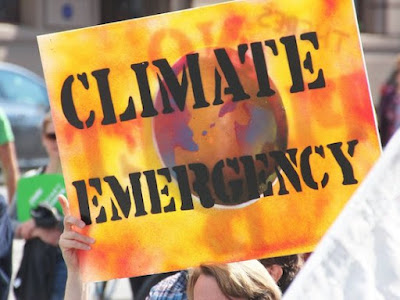 TIME’s Editor-in-chief on why Greta Thunberg is the Person of the Year
TIME’s Editor-in-chief on why Greta Thunberg is the Person of the YearBY EDWARD FELSENTHAL
It began with a story line familiar to every parent of every generation in every corner of the globe: an indignant teenager and a sudden burst of rebellion. It became one of the most unlikely and surely one of the swiftest ascents to global influence in history. Over the course of little more than a year, a 16-year-old from Stockholm went from a solitary protest on the cobblestones outside her country’s Parliament to leading a worldwide youth movement; from a schoolkid conjugating verbs in French class to meeting with the Secretary-General of the United Nations and receiving audiences with Presidents and the Pope; from a solo demonstrator with a hand-painted slogan (Skolstrejk för Klimatet) to inspiring millions of people across more than 150 countries to take to the streets on behalf of the planet we share.
Meaningful change rarely happens without the galvanizing force of influential individuals, and in 2019, the earth’s existential crisis found one in Greta Thunberg. Marshaling “Fridays for Future” protests throughout Europe; thundering, “How dare you!” at the world’s most powerful leaders in her viral U.N. speech; leading some 7 million climate strikers across the world in September and tens of thousands more in Madrid in early December, Thunberg has become the biggest voice on the biggest issue facing the planet—and the avatar of a broader generational shift in our culture that is playing out everywhere from the campuses of Hong Kong to the halls of Congress in Washington.
As Isabella Prata, the mother of two climate strikers in São Paulo, puts it, “Greta is an image of all of this generation.”
Thunberg demands action, and though far too many key measures are still moving in the wrong direction, there are nascent signs that action is coming. Corporate commitments to sustainable growth and net-zero emissions are on the rise. More than 60 countries have pledged to have a net carbon footprint of zero by 2050. American primary voters, especially in states beset by wildfires and flooding, are suddenly giving presidential candidates an earful on climate change. In Austria’s September elections, the Green Party more than tripled its support at the expense of the Social Democrats, a development a leader of the Social Democrats attributed to Thunberg—just before he resigned. Even as China burns half the world’s coal, it too is changing. It’s now home to roughly 45% of the electric cars and 99% of the electric buses in the world.Thunberg stands on the shoulders—and at the side—of hundreds of thousands of others who’ve been blockading the streets and settling the science, many of them since before she was born. She is also the first to note that her privileged background makes her “one of the lucky ones,” as she puts it, in a crisis that disproportionately affects poor and indigenous communities. But this was the year the climate crisis went from behind the curtain to center stage, from ambient political noise to squarely on the world’s agenda, and no one did more to make that happen than Thunberg.

















